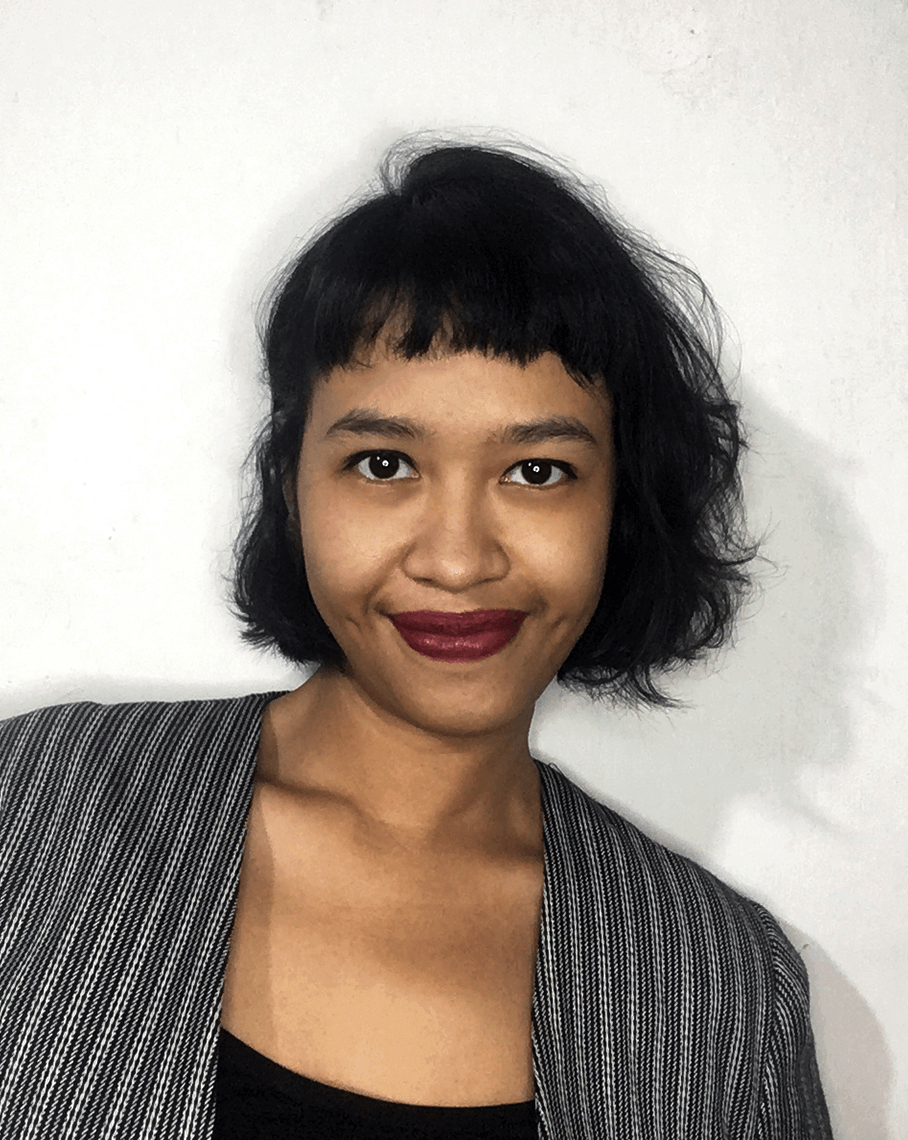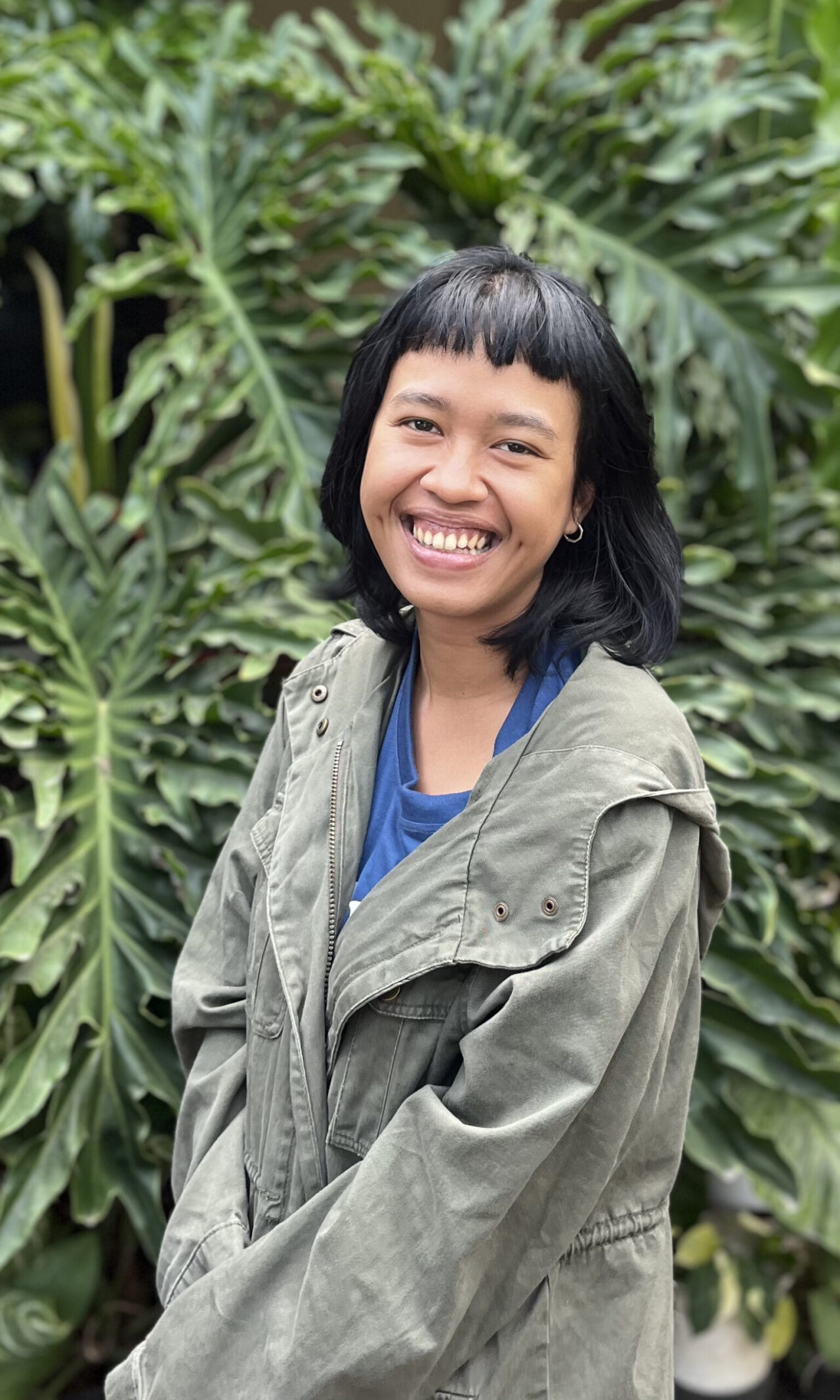Syaura Qotrunadha is an artist whose practice is informed by a belief that ‘Asia’s future of technology advancement is never apart from the human needs and beliefs who live in it’ and that it is ‘necessary to search for the intersections between humanity and technology.’
Currently, Syaura is pursuing postgraduate study at MFA Fine Art, Goldsmiths University of London. Her works have been exhibited at “Berdiam/Bertandang: Art for Refuge”, National Gallery of Indonesia (2018), “Cur(e)ating the Earth, Shifting the Center”, Jakarta-Yogyakarta-Makassar Biennale Online Exhibition (2020), “10×10: Me Culture/We Society”, Korea Research Fellow (2021), “METAMORPHOSIS METAVERSE”, Elektra Virtual Museum, Montreal (2022) and “Indonesian Young Artists: Redefining the Indonesian Aesthetic”, Gajah Gallery Singapore (2023). She is also one of the shortlisted artists for “Julius Baer Next Generation Art Prize” (2020) held by Julius Baer Group and “The 4th VH Award” (2021) held by Hyundai Motor Group.
Her VH AWARD proposal, Fluidity of Future Machines (2021) is a video collage consisting of footage and visual archives presented with a performative proposition and explores the relationship between water and living creatures’ migration, speculating the future of human nature.
Behind The Screen: Meet Syaura Qotrunadha
Would you tell us what your response was to being shortlisted?
Firstly, I’m happy that the last part of my trilogy video art project can be finished this year with the help of the right people in the field. It offered me new perspectives about the medium’s development possibilities. To be honest, I was surprised and a bit nervous as it is my first international residency program. It is a great experience to do the process together with four other fellow residents and try to understand our diverse practice. So, I can say it was a really mixed feeling. I’m happy, nervous, and excited at the same time. Especially in this unpredictable pandemic situation.
Would you tell us about how “Asia’s future of technology advancement” and “the intersections between humanity and technology” inform your art practice?
So basically, for my whole life, I understand that technology has always been an important part of our daily life. It has been there for a long time since the prehistoric period. The early human civilisations won’t survive and have food without tools made out of bones or stones around them, and I see the current technology’s role just the same as it used to be. And even currently we really blend with it.
The sad thing is in the past, people made their tools based on their own needs in particular habitats to survive. Meanwhile, as a person who lives in South-East Asia today, I felt so much limitation to access the current technology or at least have the proper one which is mostly not created based on our needs. Moreover, I also notice that there are lots of ambitious tech-related projects to impersonate or build hyper-realistic Artificial Intelligence that ends up cutting the number of human jobs or being consumed by lonely people around us. I witnessed that people are highly addicted to it without really using them for any good purposes other than as a coping mechanism or fulfilling the human ego, which at some point can become dangerous.
While Asia’s technology today is really going through surprising developments, I think it is important to question whether what we develop today can be really useful or potentially end up being misused. Technology is important, but it is not the main thing in our life’s purpose as humans. So we need to face many considerations to effectively advance our technology, which I feel has not really been done properly before.
Have you always worked in video and performance? What is it about the mediums that allow you to address your critical and formal concerns?
I have never limited my medium of choices. I was a formally trained photographer, dropped out from engineering school, grew up in a medical and official background family, also working as a freelance graphic designer.I believe that mediums, whatever the forms are, can also play their own role as a counter or critical statement to the established knowledge about particular issues.
By coincidence, video and performance are mediums that can accommodate several things in one complete body of work. They can represent movements, experiences, sounds, and narration at the same time. And talking about the trilogy video art project I’ve made with my collaborators, it is really about composing collective memories, knowledge, and experiences together. These are the most important processes for me when creating videos or other interactive artworks that involve many people. The bonus is, we can try to heal ourselves naturally by understanding the issues from many different perspectives.
I’m a very curious person in nature. So I am concerned a lot more about the contents of the work and decide the mediums later on. Some things just don’t always fit in video or performance.
May we ask if you have always been interested in the natural world?
I was born in Lombok, a small island in Indonesia. When I was a kid, I could swim before I could talk or write. I remember that the first book that my mother brought me were books about water and soil natural processes for kids. Although I moved a lot to big cities, later on, I always could recall my relationships with the natural world. As I mentioned, I am a very curious person. I like to know and understand the process of making any small thing that I’m interested in. These days I am even questioning if plastic is possible to be created without fossils, which only completes the primary question of my work, what is our role in this world as human beings? It’s not about destroying nature or whatever, nature clearly can heal itself, but aren’t we just slowly destroying our own species right now by our advanced capacity?
May we ask you to tell us how you are using your online residency with Eyebeam, and how is it supporting your ability to realize your project?
The online residency with Eyebeam will always be one of those precious moments in my early career. I’ve found a lot of interesting materials from past programs on its website, eyebeam.org. I can’t say how it is going yet because it is only our third meeting. But I can see that they are really trying to accommodate and support us by giving many references that could be useful for our productions. It is a great opportunity to discuss our challenges with practitioners who have spent at least half of their lifetime in the fields.

